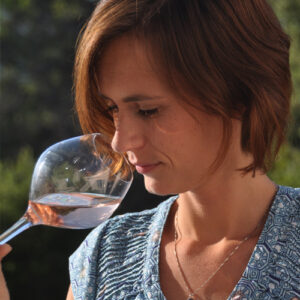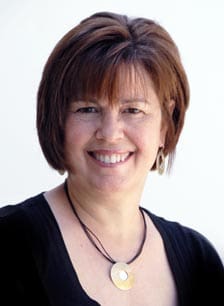Addressing early harvest, precursor aromas, oak consistency
and health-conscious winemaking
By Laurie Wachter
Winemakers often experiment, run tests and make adjustments in their winemaking process. They may need to cope with unexpected weather or climate change threats such as wildfires, decide to try a new product or technique, or make refinements to improve the quality of their wine. This article briefly outlines some winemaking tools and opportunities winemakers might want to consider.
Countering early harvest
This season’s late harvest drives home the value of a yeast strain such as Metschnikowia pulcherrima that can pull more from grapes picked mid-vintage.

“Winemakers appreciate its ability to achieve a very fruit-driven, ripe berry spectrum without having to leave the grapes hanging on the vine until they hit ethanol levels above 15%,” says Tinus Els, the commercial director of fermented beverages at Ravago Chemicals North America.
This non-saccharomyces yeast strain can deliver a balanced wine with less alcohol and has been proven effective with Cabernet Sauvignon and Shiraz. Winemakers can also use it to gain color intensity by increasing the levels of polymeric pigments and anthocyanins.
Optimizing aromatic expression
Regardless of when grapes are harvested, a winemaker’s goal is always to draw the best from them.

“There is so much potential in the grapes that is not realized in the wine,” says Eglantine Chauffour, the product manager of winemaking solutions at Bucher Vaslin North America. “And, although there are many steps in winemaking that help transform these precursor aromas, there is still significant potential that remains dormant. A study showed that, even in the best-case scenario, only about 40% of the aromatic precursors in the grapes are expressed in the wine. It’s a pity to lose this potential.”
That finding was, in Chauffour’s words, “mind-blowing” and launched a course of experimentation and innovation. The goal was to, as much as possible, express and protect the thiols, terpenes and norisoprenoids naturally present in precursor form. In other words, to develop yeasts, nutrients and enzymes to extract these compounds during the winemaking process and reach the full aromatic potential of wine.
Creating consistency in oak
After winemaking is complete, the role of oak on wine’s sensory profile, tannic structure and color comes into play. Radoux offers a more precise sorting technology that uses near-infrared spectrometry to give winemakers more control over the oak they use.

“Most coopers go by the forest source for their grain selection,” says Craig Holme, national sales manager at Tonnellerie Radoux USA. “Oak compound analysis instead measures the quantity of polyphenols contained in staves, letting us sort wood based on the level of tannin potential in addition to a visual measure of grain tightness.”
This approach provides winemakers with higher consistency in the impact of oak products on the organoleptic properties of wine. As a result, winemakers can choose the barrel, staves or chips that will deliver the tannin levels and grain tightness they want.
Making ‘better-for-you’ wines
Beyond making traditional wines better, winemakers are beginning to address consumer interest in healthier wines by creating low-alcohol, low-calorie and vegan options.

“It’s critical for wineries to listen to the more health-conscious new generations, as they will be the most significant group of consumers going forward,” says Lorenza Allen, a technical marketing specialist at Enartis USA. “Having vegan, low-alcohol and low-calorie wines will be important as these generations mature.”
Although there are numerous ways winemakers can create these new wine types, Allen has suggested several for winemakers to consider. One of the primary barriers to making a vegan wine is the use of animal-based potassium caseinate in fining, a problem they can resolve by using plant-based substitutes such as a fining agent that uses pea protein. Many winemakers use dealcoholization to create low-alcohol wines, but an alternative approach is to use a yeast that reduces potential alcohol. For low-calorie wines, a unique stabilizer delivers sweetness, roundness and mouthfeel without sugar or calories.
Each of these tools and techniques offers the winemaker the solution to a different problem, but what they share in common is giving winemakers more control over their winemaking process.
Tinus Els will be moderating Non-Conventional Wine Yeast and Their Impact on Sensory Characteristics at the 11th Annual North Coast Wine Industry Expo (WIN Expo) on November 30, where he will lead a discussion on achieving fruit-driven, ripe berry wines in grapes picked mid-vintage with Dr. Anthony Heinrich, business development & sales director at AB Biotek, and winemakers Michael Coode of Rutherford Hill Winery, Lisa Evich of Simi Winery and Greg Landin of Carneros Hill Winery, Jackson Family Wines.
Eglantine Chauffour will be moderating Optimizing Aromatic Expression of Your Grapes and Wines and leading the discussion on ways that winemakers can immediately improve the aromatic quality of their wine with Carol Shelton, the winemaker and owner of Carol Shelton Wines.
Craig Holme will be moderating Advances in the Analysis of Oak Compounds by Near Infrared Technology and leading the discussion on developing and using oak alternatives and barrels with experts Alison Crowe, VP of winemaking at Plata Wine Partners, Jean Hoefliger, consulting winemaker at JH Wine Consulting, and Zach Waltz, director of operations, viticulture and enology at Waltz Vineyards.
Lorenza Allen will be moderating Low Alc, Low Cal & Vegan Winemaking Solutions: Meeting New Consumer Demands and leading the discussion about making better-for-you wines with winemakers Chris Barrett of Pezzi King and St. Anne’s Crossing Wineries, Casey Di Cesare of Scheid Family Winery and Samantha Taylor of Hope Family Wines.
Learn more about these winemaking sessions, the accompanying wine tastings and the upcoming WIN Expo event at wineindustryexpo.com.
________________________________________________________________

Laurie Wachter
Laurie developed her love of analytics and innovation while advising consumer packaged goods companies, including Kraft Foods, PepsiCo and the Altria Group, on consumer and POS data analytics and direct-to-consumer marketing. Today, she writes about the wine, food and beverage industries for a global client base from the Northern California wine country.


















